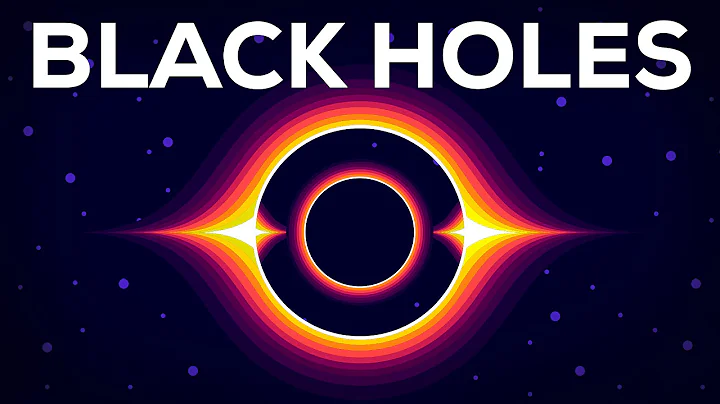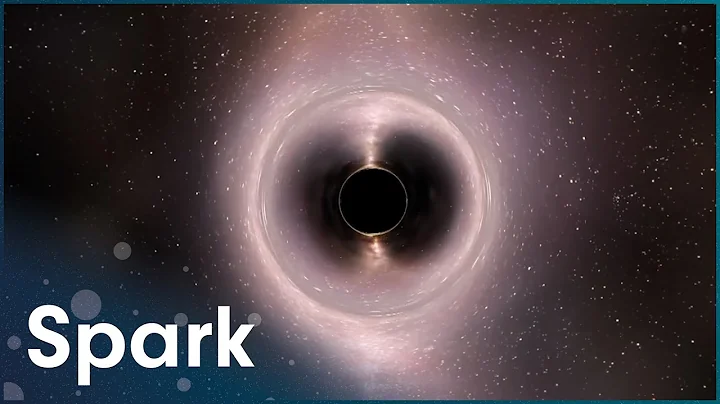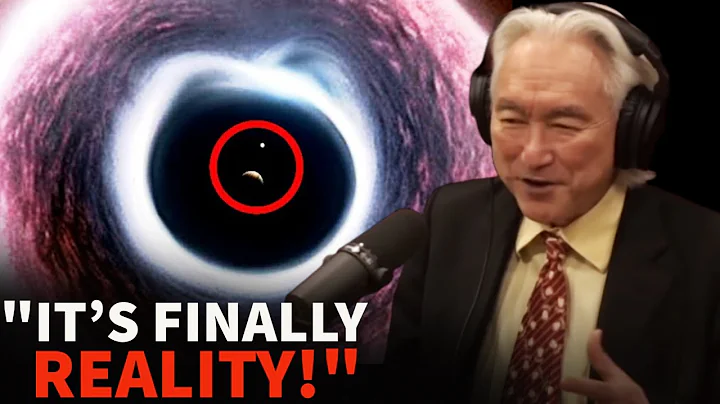
A hypothetical image of two black holes merging. (Source: California Institute of Technology R. Hurt (IPAC))
What is the nature of a black hole? Where do black holes come from? What role do black holes play in the evolution of the universe? These questions still puzzle scientists. Now, a new study suggests that those black holes that existed in the earliest days of the universe could explain several astronomical mysteries.

This study shows that after the Big Bang, the early universe was populated by primordial small black holes that accelerated the formation of stars and galaxies. The theory itself is not new, having been proposed by Stephen Hawking as early as 1971. However, in this new study, astronomers tell people that the huge gaps in human understanding of the universe can actually be cleverly filled by primordial black holes.

First, these black holes can explain the existence and properties of dark matter . Dark matter cannot be seen and is estimated to make up 85% of all matter in the universe. So how do primordial black holes explain the mystery of dark matter? Quite simply, these black holes may be unobserved dark matter itself, although there is no evidence for this theory so far.
"Our research shows that without introducing new particles or physical theories, we can unravel the mysteries of modern cosmology, from studying the properties of dark matter itself to searching for the origins of supermassive black holes ." University of Miami Nick Cappelludi, assistant professor of physics at and co-author of the study, said in the statement.

The theory of primordial black holes was first proposed by Hawking, but was later abandoned by the mainstream view. The prevailing view is that black holes are created when massive stars collapse at the end of their lives.
But in the past few years, people have used cutting-edge technology to observe and detect black holes, and found that the black holes lurking in the universe do not always match expectations. Some black holes are either too big or too small, yet it is impossible for such black holes to form through the collapse of massive stars.
"Black holes of different sizes remain a mystery. We don't understand how supermassive black holes grew to such huge sizes in the relatively short time since the universe began." Science Director of the European Space Agency (ESA) According to Ginter Hassinger, co-author of the paper.

According to this theory, black holes have existed from the beginning, accelerating star formation in the millions of years after the Big Bang. (Source: European Space Agency)
The new model proposed by scientists has changed several time points in the previously assumed timeline of the evolution of the universe. For example, if primordial black holes had existed from the beginning, they would have merged faster than we think, giving them more time to grow to the sizes they can be detected today.

The gravity of these black holes also accelerated the formation of the first generation of stars and galaxies. Because in the first millions of years after the Big Bang, the clouds of dust and gas that filled the dark universe would have collapsed faster under the gravity of the black hole. As a result, those mysterious dark periods would have been shorter and the first generation of stars would have formed earlier.
"If the original black hole exists, it will be the original source of all black holes, and the black hole in the middle of the Milky Way is no exception." Priyamwada, professor of astronomy at Yale University and one of the co-authors of the study Natarajan said in a statement.
It’s not just large black holes that astronomers have trouble explaining. The European Space Agency's Gaia mission has produced the most detailed three-dimensional map of the Milky Way. The evidence shows that there are a large number of small-sized black holes scattered throughout the Milky Way. These black holes are too small to be born from the collapse of a large star.

This launch mission has one of the most important goals, which is to detect the afterglow of the first generation of stars produced after the Big Bang, which are the first beams of light in the universe. Residual infrared evidence will reveal which theory is more correct: whether black holes have always existed from the beginning, or whether they began to form only after the death of the first generation of stars.
"If the first generation of stars and galaxies had already formed during the so-called 'Dark Ages of the Universe,' then the Webb Space Telescope would also have obtained corresponding evidence." Hassinger said.
The research has been accepted for publication in The Astrophysical Journal and is available online on the preprint site Arxiv.

Related knowledge
The James Webb Space Telescope is an infrared space telescope that has been launched. It was originally planned to cost US$500 million and be launched in 2007. However, due to various reasons, the project has suffered serious overruns and the launch time has been postponed several times. The latest estimated total cost is as high as 10 billion U.S. dollars. The launch time is 7:20 US Eastern Time on December 25, 2021. On August 28, 2019, NASA stated that the telescope was assembled for the first time.
BY: Tereza Pultarova
FY: Xiao Dai classmate
If there is any infringement of relevant content, please contact the author after the work is published to delete
Please also obtain authorization for reprinting, and pay attention to maintaining integrity and indicating the source





















